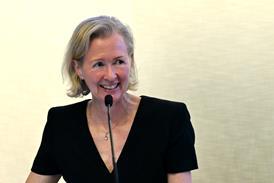The Law Society Council last week recognised 'the desirability' of creating a greater separation of Chancery Lane's representative and regulatory roles - but then delayed plans to establish a regulatory board with substantial lay membership and full delegated powers.
In a debate on the Law Society's response to the Clementi review consultation paper, the council said the Society should continue to be the prime regulator for the solicitors' profession, while accepting that a greater distinction needs to be made from its representative function.
Not one council member voted in favour of the paper's model A, which would see the creation of the legal equivalent of the Financial Services Authority.
The council approved a statement that model A would threaten independence, be inadequately responsive to the realities of practice, and be unduly expensive.
However, uncertainty over the exact detail of the other two models, B and B+, meant the council was not able to express a preference between them.
Model B would involve an umbrella legal services board overseeing the professional bodies in the exercise of their functions; B+ would be similar, but with the addition that the bodies separate their regulatory and representative functions.
The draft response had come out tentatively for model B+.
But the council was concerned about the lack of detail in the consultation, and there was confusion over whether the greater division would be achieved within the existing institutions, or by creating separate representative and regulatory bodies.
However, in a later debate about the interim report from the governance review group, the council delayed until December any immediate moves to achieve greater separation of regulation and representation within the Society.
The group - chaired by non-lawyer Baroness Prashar - had recommended establishing as soon as possible a regulatory board with delegated responsibility for the Society's regulatory functions.
Half of its members would be lay people.
It also proposed cutting the size of the council, which would have a representative role in the new structure, from the current 105 members to between 30 and 50, and rationalising the board structure under the council.
Under the existing legislative framework, the council would still have to approve regulatory decisions, but it was not clear to what extent the council should be able to interfere with them.
Baroness Prashar told members that if the Society is to retain regulation, 'it needs to treat its regulatory role as its prime function', with representation seen to be separate.
She added that it was important for the Society to reform its governance regardless of the Clementi review.
However, council members expressed concern that the report contained insufficient reasoning to make such a major decision.
They overwhelmingly passed an amendment put by lay member Huw Thomas, which endorsed the principle of greater separation but called on the group to consult and produce in December a final set of detailed recommendations on how to achieve this.
Council member John Pickup said changing the corporate governance structure now would not 'bounce' the Clementi review in a particular direction.
Several council members also spoke against the proposal to merge the representation and law reform boards, saying it could compromise the credibility of the law reform board in suggesting changes to the law.
By Neil Rose



























No comments yet